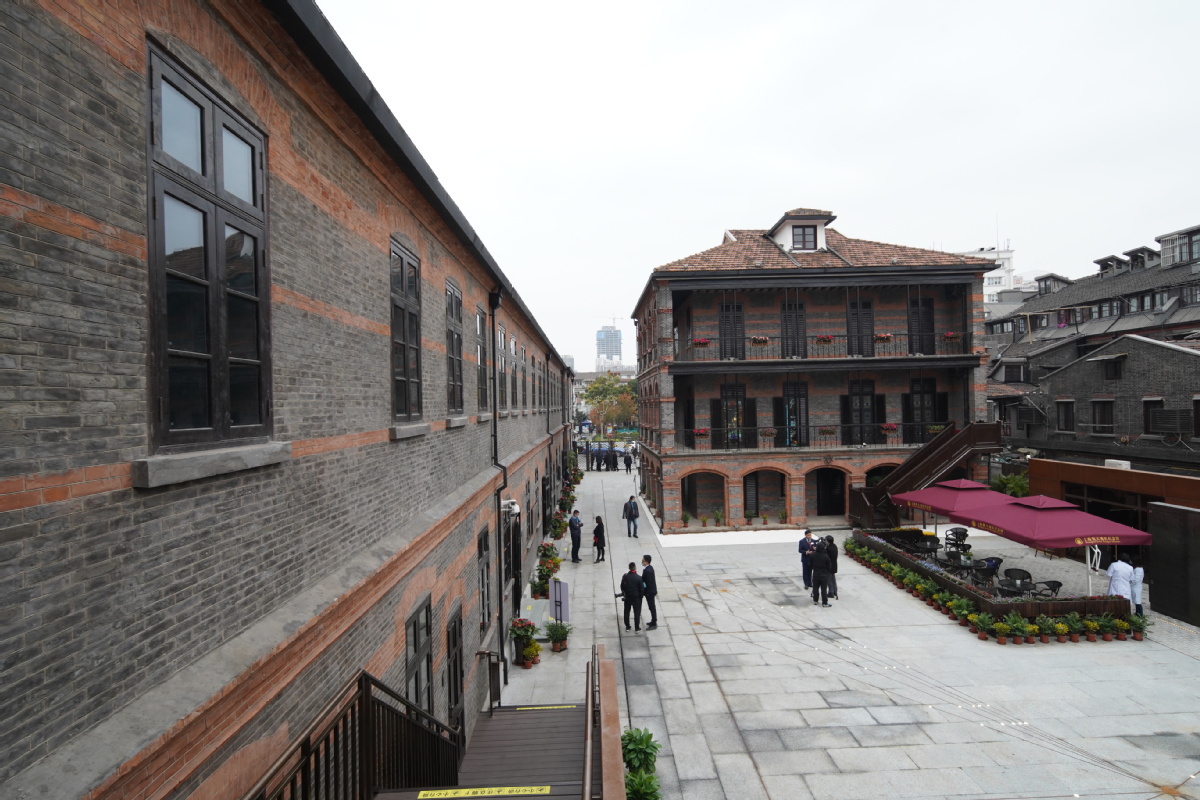今日上海
犹太难民在上海:一段历史中无法被忘却的篇章 - 2024年09月19日
Jewish refugees in Shanghai: an unforgettable chapter in the history

The Shanghai Jewish Refugees Museum is located on the site of the former Ohel Moshe Synagogue which was built in 1927.
In the 1930s and 1940s, more than 20,000 Jews took refuge in Shanghai. For the Jewish refugees, a whole new way of life awaited them in a land with radically different customs and rules. Meanwhile, the Chinese, suffering from the Japanese aggression, had tolerated the influx of these “uninvited” Europeans who had nowhere else to go. A new mode of cultural exchange of "blending in adversity" started in Shanghai, reflecting the warmth of humanism in the dark years, and writing an important and unforgettable chapter in history.
Language was the biggest communication barrier but also a reflection of cultural integration. There was a thing called Pidgin English, which was a little bit of English, some German, and Chinese, a product of linguistic and cultural fusion. Many of the refugees recounted how they struggled to adapt to the local life.
Joseph Weber, who was just 17 when he took refuge in Shanghai from Austria in 1939, wrote in his memoirs, that to find a job and make a living, he tried to learn Chinese and bought a phonetic textbook. While working as a draftsman in an architectural office, he found that the best way to learn Chinese was to drop in on the workers at the construction site after work. “Good-natured men would instruct me willingly.”
For newly arrived Jewish refugees, adjusting to a foreign language was not the only obstacle. Radically different customs and rules were sometimes less than comforting. For example, they had to remember to drink water only after boiling it, and to empty the toilet every morning while collecting “night soil”.
Weber described an interesting event in his family memoirs: he and his wife Tessie had been invited to dinner at their Chinese friends' homes to attend local weddings. "Dish followed dish, each one a work of art. According to Chinese etiquette, the honored guests were offered the most delectable bits by the hosts, who picked them from the dishes and placed them on our plates with their chopsticks. We tried not to dwell on the fact that the chopsticks had just been in their mouths." Using chopsticks to pick up the most delicious part of the food to the guest is the Chinese way of hospitality, but to Westerners, it was uncomfortable, though they fully felt the warmth.
The influence of Chinese cuisine is profound, as it remains a symbol of connection for these Jewish refugees to their past time spent in China. Many Jewish refugees continued to visit Chinese restaurants after leaving Shanghai. When Weber's descendants visited the Shanghai Jewish Refugees Museum earlier this year, his grandson James Weber said, "When my sister and I were growing up, every Friday night, we would go out for Chinese food. We learned to use chopsticks at a very young age. We still use them.”
In 1943, the Jews had been forcibly relocated to the tenements of Hongkou by the Japanese occupiers. After the establishment of the stateless refugee ghetto by the Japanese in February 1943, Jewish refugees and Chinese people lived together in the Hongkou ghetto and had closer contact. The area around Huoshan Road and Zhoushan Road was once known as "Little Vienna," a settlement area for Jewish refugees. The terraced buildings on one side of the street are neither the typical Shikumen houses of Shanghai nor traditional Chinese buildings, but rather a blend of Eastern and Western elements: arched windows and doors, decorative columns, blue brick exterior walls with red brick bands, red tile roofs, and triangular gables above the entrances.
At that time, this area housed tens of thousands of Jewish refugees, plus Chinese residents, making it incredibly crowded and noisy. Once they adapted to the environment, many skilled Jewish refugees resumed their trades, opening European-style shops, including cafes, bakeries, candy stores, and restaurants, as well as theaters that regularly held performances by Jewish musicians.
The White Horse Cafe, one of the most famous daily gathering places for Jewish refugees, was rebuilt to its original appearance based on photos provided by the descendants of the original owners in 2015. Today, the three-story European-style building attracts a large number of guests every day.
After World War II, many Jewish refugees left Shanghai to live around the world, but they all have one thing in common: they still maintain an emotional connection with China and Shanghai. In 1979, when Michael Blumenthal, a Jewish refugee who was then the US Treasury Secretary, visited China, he made a special trip to Hongkou, to visit his old home. Some Jewish refugees also came to Shanghai to invest and do business. Most of the Jews who had lived in Shanghai were deeply influenced by Chinese culture: they liked Chinese food, loved Chinese operas, could do Tai chi, and had their own Chinese names.
Source: China Daily
